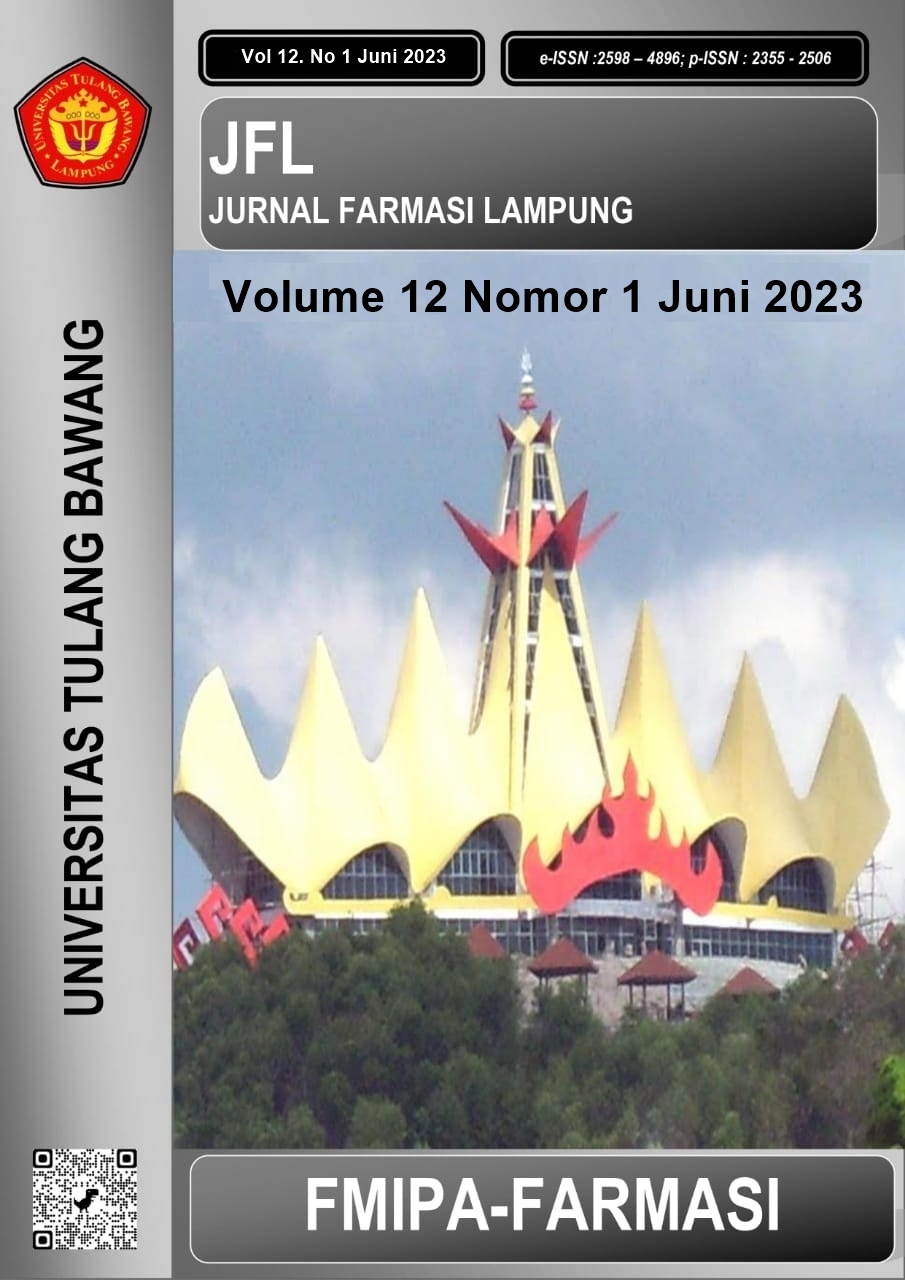FRAKSI ETANOL RIMPANG KENCUR (Kaempferia Galanga L.) SEBAGAI ANTIBAKTERI TERHADAP Bacillus Subtilis dan Escherichia coli
DOI:
https://doi.org/10.37090/jfl.v12i1.995Abstract
Abstract People were accustomed to use natural ingredients as traditional medicine because it was more economical and has little bit side effects compared with synthetic drugs. One of the herbs that has been widely known in the community as traditional medicine was the kencur rhizome. The kencur rhizome contains flavonoid and saponins which were antibacterial. The purpose of this study was to prove that there was the inhibition in ethanol fraction of kencur rhizome towards the growth of bacillus subtilis and Escherichia coli. The extraction process of kencur rhizome was carried out by maceration method used 70% ethanol solvent and continued with fractionation by using ethanol, n-hexane and chloroform solvents. Then, antibacterial test used diffusion method with concentrations of 25%, 50%, 75%, 100%, positive control of ciprofloxacin and negative control of aquadest. The test was continued by looking at the formation of inhibition zones around the diffusion and measured by using a calipers. The highest diameter of inhibition zone antibacterial activity of kencur rhizome at concentration 100% with a diameter of 22.00 mm in E. Coli and 20.00 mm for B. Subtilis, whereas positive control diameter inhibition zone of ciproflocaxin was 40.00 mm in E. Coli and 40.0 in B. Subtilis. The conclusion of this study was the ethanol fraction of kencur rhizome 100% concentration is the best concentration in the inhibition zone. Keywords: Antibacterial, Bacillus Subtilis, Escherichia coli, Kencur.Downloads
References
DAFTAR PUSTAKA
Fajeriyati N, Farmasi F, Uji Aktivitas Antibakteri Ekstrak Etanol Rimpang Kencur ( Kaempferia galanga L . ) Pada Bakteri Bacillus subtilis dan Escherichia coli ( Antibacterial Activity of Ethanol Extract of Kencur Rhizome ( Kaempferia galanga L .) in Bacillus subtilis and Escherichia coli journal of current pharmaceutical sciences (JCPS). ). 2017;1(1):36–41.
Kencur R. Identifikasi Golongan Senyawa Flavonoid Dan Uji Aktivitas Antioksidan Pada Ekstrak Rimpang Kencur Kaempferia galanga L. Dengan Metode DPPH (Skripsi) (1,1- Difenil-2-Pikrilhidrazil). 2015;
Kusnandi., Egi Trinia Devi. 2007. Isolasi dan Identifikasi Senyawa Flavonoid pada Ekstrak daun seledri (Apium graveolend L.) dengan Metode Refluks. e-journal.ups.ac. 2018;675.(10):24-90 p.
Karsinah dkk. Buku Ajar Mikrobiologi Kedokteran. Jakarta; 1994. 163-165 p.
. Jawetz. Melnick. dan Adelberg’s. Mikrobiologi Kedokteran. Edisi I.
Jakarta: Salemba Medika; 2001
. Pelczar. M. J & Chan. E. C. S. Dasar- dasar Mikrobiologi. Jilid 2. Ratna Siri Hadioetomo. D, editor. Jakarta: UI-
Press; 2012
Kovar A. Identifikasi Obat. Edisi 5. Bandung:ITB. 2002









